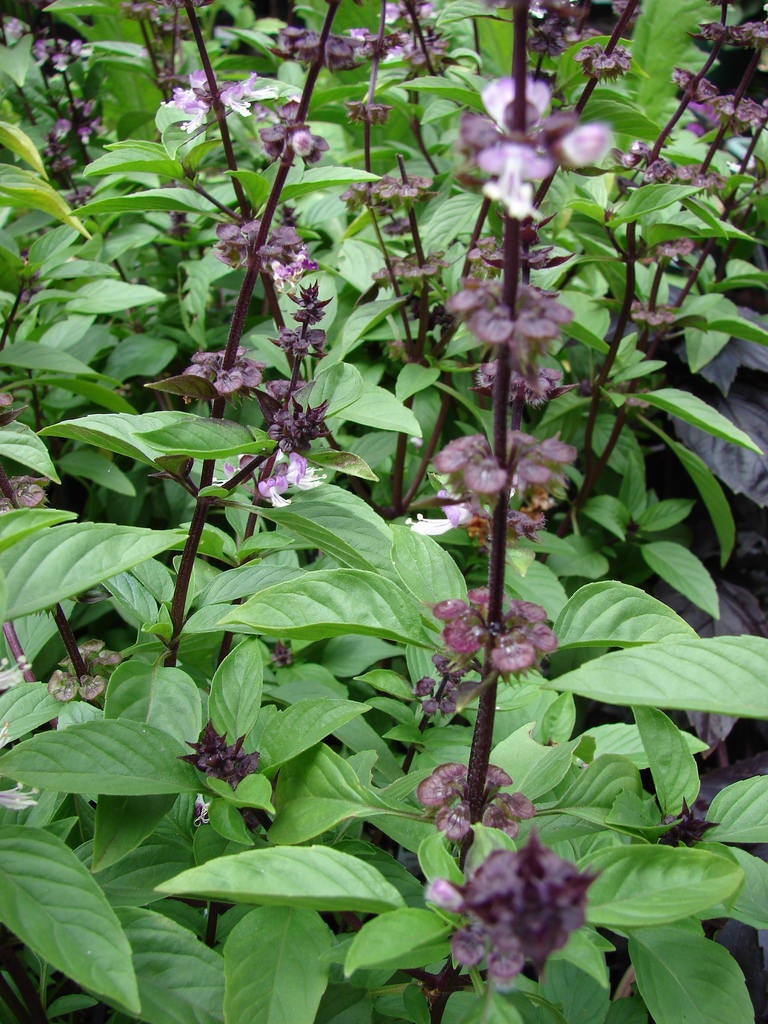Siam Queen Basil Info: Learn About Basil ‘Siam Queen’ Care


Basil is a popular spice plant for herb gardens, used for flavoring in a variety of cuisines. If you are a serious cook, you’ll need to use different types of basil depending on the type of food you are making. For Thai food, you’ll want to consider basil ‘Siam Queen.’ This type of basil has a strong anise flavor and the fragrance of clove. Read on for more Siam Queen basil information, including tips on growing Siam Queen basil plants.
What is Siam Queen Basil?
The Siam Queen basil is such a lovely plant that it doubles as an ornamental. In fact, some gardeners start growing Siam Queen basil in flower beds for the large emerald leaves and brilliant purple flowers.
According to Siam Queen basil information, this plant grows leaves that are 4 inches (10 cm.) long and 2 inches (5 cm.) wide. It also produces intensely colored deep purple flowers. If you are growing Siam Queen basil to use in cooking, you should pinch off the buds before they flower.
Many types of basil are sweet, including those used in Italian cuisine. However, do not expect the same sweet, rounded taste from Siam Queen. The leaves of this basil taste like licorice. They offer a spicy bite of strong anise flavor mixed in with the familiar basil taste. Even the smell of the pungent leaves is spicy and really perfumes the air of your summer garden.
Growing Siam Queen Basil
Siam Queen basil plants, like all basil plants, require lots of sunshine to grow and thrive. They also need well-draining soil with a high organic content. It should be consistently moist.
It is easy to start growing Siam Queen basil from seed. You can sow the seeds indoors in late winter, about 8 weeks before the final scheduled frost. Transplant them after they have two sets of true leaves.
Alternatively, you can sow the basil Siam Queen seeds in the garden bed in spring once the soil is warm. Just scatter the seeds, then cover them with about ¼ inch (.6 cm.) of soil. Thin the plants to 12 inches (30 cm.) apart.
Sign up for the Gardening Know How newsletter today and receive a free copy of our e-book "How to Grow Delicious Tomatoes".

Teo Spengler is a master gardener and a docent at the San Francisco Botanical Garden, where she hosts public tours. She has studied horticulture and written about nature, trees, plants, and gardening for more than two decades, following a career as an attorney and legal writer. Her extended family includes some 30 houseplants and hundreds of outdoor plants, including 250 trees, which are her main passion. Spengler currently splits her life between San Francisco and the French Basque Country, though she was raised in Alaska, giving her experience of gardening in a range of climates.